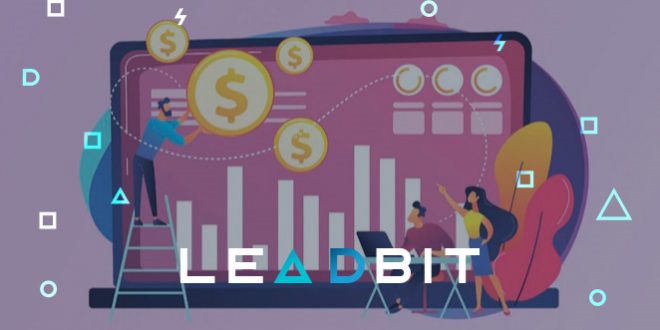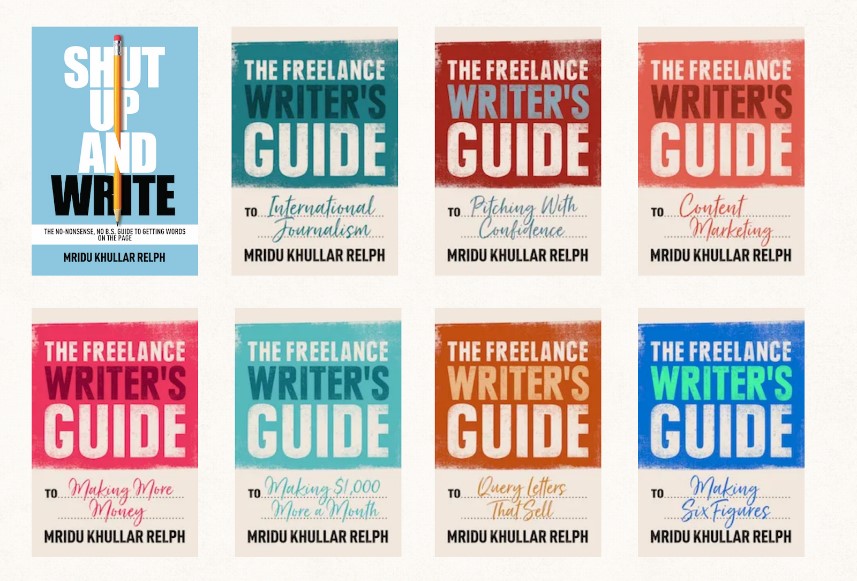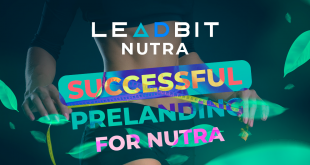Do you have a small blog or entertainment site with a good reader base? Or are you just contemplating the idea of creating your own Internet portal? In any case, you have a question: is it possible to make money off of your own website and if so, how? The answer is unequivocal: YES, you can!
Blogging and internet marketing are much more than hobbies, they are lucrative professions. Authors who are trusted by a large audience earn hundreds of thousands of dollars a year. But let’s be honest: your own website or blog is not an ATM that automatically transfers money to your card a couple of times a month.
Technically, it’s pretty simple: purchase a hosting or register with an online website builder, choose one of the ready-made designs and edit and mold it to fit your objectives better. All this will take 10-15 minutes. But it takes a lot of effort to make the site popular. These are dozens, hundreds of unpaid hours, regular posts with cool, high-quality content and constant audience searches.
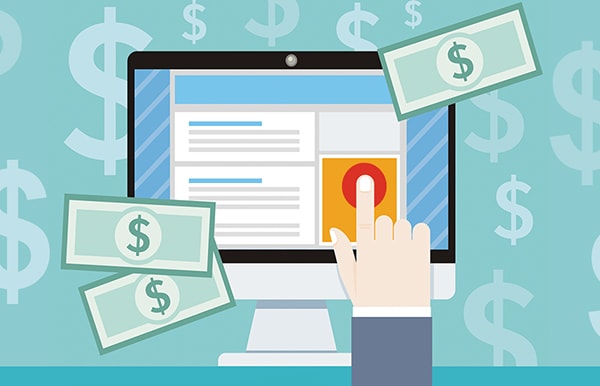
There is no need to give up the idea of having your own website, since that is a potential source of income, and quite decent income at that. The task is doable and even a beginner can handle it. At some point, we’ll definitely release an article dedicated to how you can promote your website. But today, let’s address another serious matter – how to make money on the traffic you attracted. This is a guide to monetizing your website – making money through advertising or promoting services among your visitors.
Table of contents
How much can you earn?
A little sidenote. Novice webmasters are more interested not in “How to monetize traffic”, but rather “How much can you earn?”. I’m convinced that the answer to the first question is much more important, but I will nonetheless satisfy the curiosity of our readers.
There is no upper cap. The author of the Financial Samurai service shared his experience: “As a CFO, I received a base salary of $250,000 and bonuses of about $500,000. No one will quit their job that pays $750,000 a year for a blog if they aren’t sure of the financial fruit this project will bring. For example, according to the owner, Making Sense Of Cents makes an average of $5 million annually. And this is nothing compared to BuzzFeed, which made about $300 million in profits in 2018.
These examples are the top 1% of the most successful blogs. But the rest of them are also doing well. The Convert Kit portal conducted a survey among platform users and calculated the average income of the surveyed respondents. It amounted to almost 55 thousand dollars a year with expenses standing at about 15 thousand. The pros received over $ 185,000 in revenue. Newcomers – about 16 thousand.
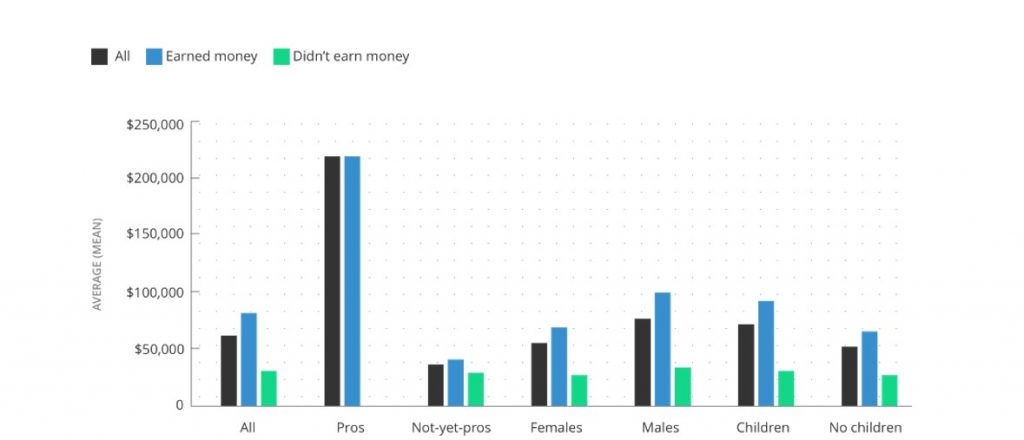
The difference between professionals and non-professionals is not in terms of the number of staff or knowing “special” digital business secrets. It’s much more trite – time. The older the website is, the more visitors it has and the more search engines and advertisers trust it. Gradually, the cost of advertising, and with it, the potential profit from “alive” portals grows.
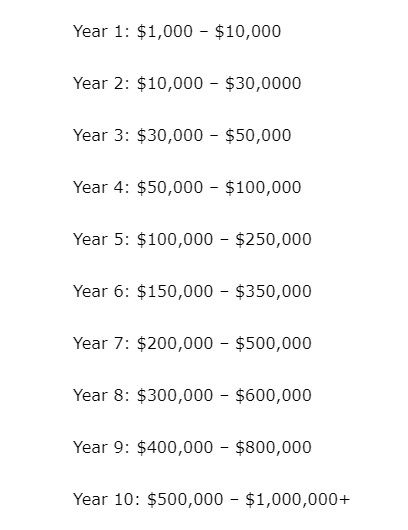
The only thing left for the webmaster is to wait and gradually develop the project. They should come to terms with the fact that the first year’s income will be small. Once Coupled, an agency that helps digital publishers and food bloggers, did the research. An estimated 68% of bloggers make less than $ 5,000 a year. These are beginners who have been in the business for no more than 10-15 months. The second figure they provide is more depressing. More than 80% of new webmasters leave the industry before they get their first dollar.
Enter monetization: what should a website be like for it to make money?
Monetization. The word is not clear to many, but it hides a simple meaning behind it: converting traffic into money. Well, okay, in human terms, this means making money on ads, which are seen by your website’s visitors, or on the direct sale of goods and services.
First of all, it is important for novice digital businessmen to clearly understand: what type of website will make money and how to develop it correctly in order to increase potential income?

Roughly, there are 2 types of websites: informational and commercial. Information portals include news portals, blogs about sports, travel, financial literacy, entertainment websites with informative content, humorous sites, sites with various tests, online cinemas, comparison services for discount coupons… There are way too many formats and themes to list all at once. Commercial websites are corporate portals, one-page landing pages, online stores, online services that make money on services (freelance exchanges, services for sub boosts, photostocks).
You can monetize traffic from both commercial and information sites. But for specific reasons, corporate portals should not be used for this purpose. They make money on their own – by attracting clients. The appearance of ads will damage user trust not only to the website but the company as a whole.
Monetizing informational websites can be done through:
- blogs – the simplest format, blogs originally appeared in the form on online personal diaries, often used as an alternative to an informational site;
- info-projects – entertaining, educational. They can be devoted to different topics, for example, Medium.com, Adme.ru. Or one vertical, like news outlets;
- thematic portals – dedicated to a specific topic, for example, the history of a rock band, a catalog site with software reviews, may contain additional features (file sharing, comparison tool);
- services – various tools that help visitors. For example, aggregators of electronics, hairdressers or restaurants, online photo or music editors, educational projects (assistance in learning languages, programming, web development).
It’s easier to start with a blog or information site. You can launch a project in less than an hour by adapting one of the ready-made templates from a website builder (for example, paperform.co, wix.com, LPGenerator). Add content, start promoting it (SEO, through social media, paid ads).
No website owner can do without a unique non-cliché design and additional modules that expand its features. But the income from traffic monetization for such projects is much higher too.
First, the layout should be responsive and look nice both on a computer and on a mobile screen. Second, bright toxic colors, flashing elements, piles of widgets distract and push users away – this is not the beginning of the 2000s. You can read more about web design here.
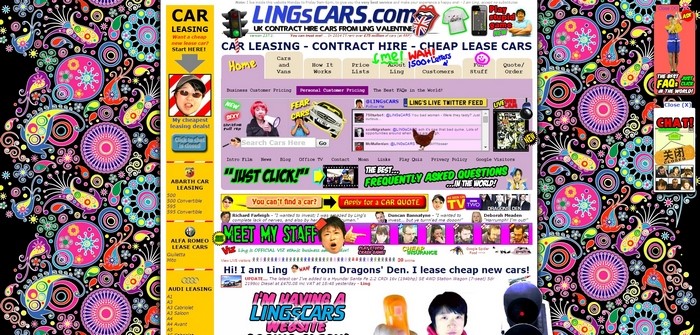
If you are just thinking about starting your own blog, you can take a closer look at the most profitable verticals. These are construction, tourism, shopping, finance, cars, business, IT, medicine. But in terms of profitability, it is not the topic that is more important, but the quality of the content. In a highly specialized niche, you can earn much more if the articles are written by an expert.
For example, do you like to travel and have accumulated a lot of photos from all your trips? Eyewitness articles with original photos are in high demand. Are you versed in computer graphics, know the intricacies of different programs and applications? Or do you repair kitchen appliances and know their inner workings? Share your knowledge and make money off of people looking for expert advice.
At the same time, articles on commercial topics will bring more profit. For example, a “How to choose a multicooker” review will overlap with requests from online stores. The cost of a click from such a page, if you place an ad banner on it, will be much higher. Additionally, you can make a deal with the sellers directly and place affiliate links to products.
Website features that improve monetization:
- A thought-out design: laconic, with elements harmoniously interacting with one another and an adaptive layout;
- Cool content: original articles and photos, useful information for users;
- The most expensive is commercial advertising – anything related to the choice of goods and services. Or, for example, with travel;
- A reasonable number of ads: no more than 2-3 banners and a couple of ad links per article.
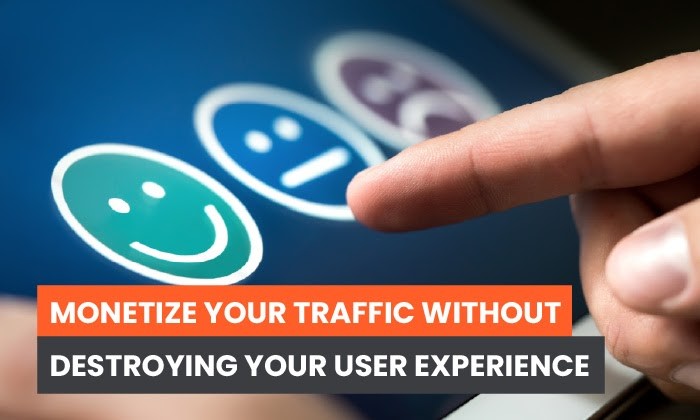
Hardware is also important. First of all, fast loading (no longer than 1-2 seconds) and no extra load on the user’s device. Clean up your code, disable widgets and items that require a lot of RAM or otherwise slow down loading.
Websites that load quickly (it’s better to go for a paid hosting) with a second-level domain (www.yoursite.com) inspire the most trust. Registration costs only a couple of bucks, and you will feel the benefits from day one: from faster promotion on search engines to simple moderation procedures on ad exchanges.
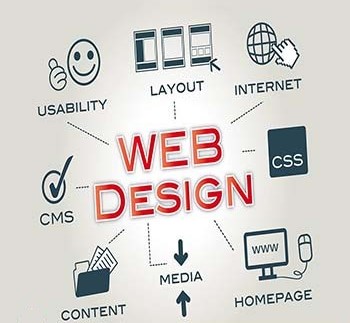
How to monetize website traffic: 6 ways
Let me reiterate, a website is not a passive source of income, you can’t just ensure a stable inflow of money in a couple of clicks. This is a job that takes effort and creativity. But if you want to be creative, create something others will find useful – it’s a job that will also bring you pleasure and satisfaction. And money… How you get to this stage – that’s all in our review.
Here are 6 effective monetization methods:
Affiliate marketing
One of the simplest website monetization formats. And profitable enough. Allows even young services with little traffic to get good income.
Affiliate marketing is a method of promoting services and products. Unlike traditional advertising, where an advertiser pays simply for the right to display an ad, affiliate programs pay for a client or target action: placing an order, subscribing to an online service, filling out a form with contact details, making a deposit.
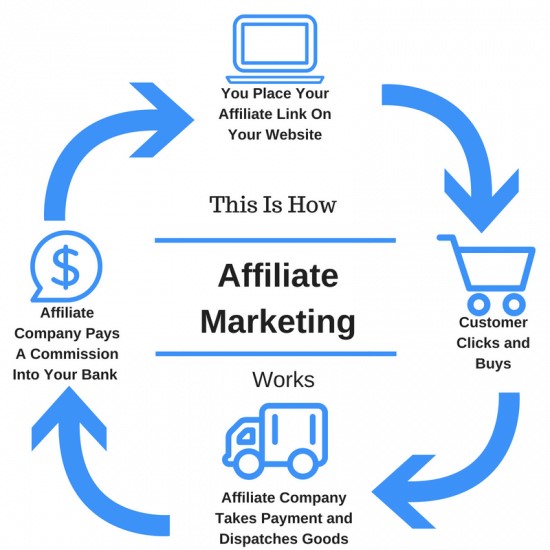
Getting a client isn’t that hard. Even though you’ll get more views than leads, the large payments for the target action will make up for it. For example, online casinos, forex brokers and dating websites pay up to $200 per user who made a deposit of only 5-10 bucks.
Here are some tips that’ll help you earn more on affiliate programs:
- Careful presentation. Be honest about the product. You don’t necessarily need to hide that you get a percentage from the sales – users like open authors, and lying can undermine your reputation for a long time;
- Be up to speed. Keep your hand on the audience’s pulse, study its interests, promote things that users care about the most. This will increase your website’s income and will save you from promoting irrelevant services;
- Don’t promote just anything you see. The ideal format is to advertise services and products related to the theme of your website. If it’s a travel blog, you can advertise hotels, airline tickets or useful travel gadgets (bags, Power Banks), travel credit cards, but definitely not TVs or online casinos;
- Do not advertise fraudulent services or products of questionable quality – this is a blow to your reputation. Test the product, or, at least check out some reviews. If you zealously promote online casinos or bookmakers that do not pay out winnings, you will get the same response as they do.
How to make money on your own website using affiliate marketing? Several promotion formats:
Product reviews, personal impressions
According to Statista.com, 78% of people trust online reviews just as much as personal recommendations from someone they know. Surely, you yourself often look at reviews on the Internet, even before making the purchase offline. That’s why reviews of products and online services or unboxings of clothes or electronic gadgets are a good way to monetize your traffic.
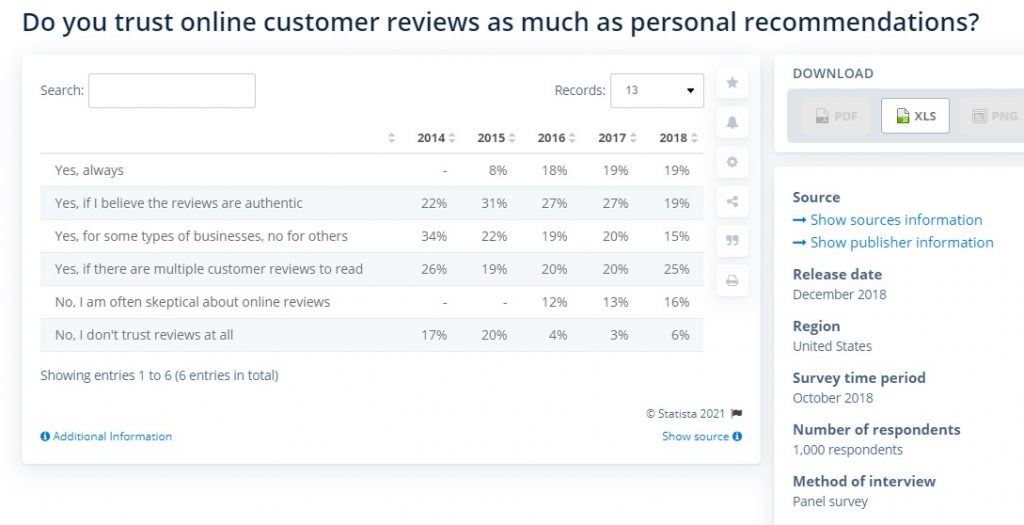
You can do reviews for almost any vertical. And your website doesn’t necessarily have to revolve around this format only. For example, in a travel blog, you can place pages describing the gadgets that you use on a trip (and of course, affiliate links to websites for booking rooms or tickets). The owners of beauty blogs can recommend cosmetic products, massagers, scrubbers or make a rating of the city’s SPA salons by leaving affiliate links.
Be objective. Drowning a product in an overabundance of praise is a bad idea (unless it’s genuinely THAT good). After all, potential consumers are looking for the truth, for it they will reward you with new visits, clicks on affiliate links, and most importantly – trust.
Educational articles
Tutorials, FAQs and other educational content will help you not only become an agent of influence, but also to promote products while making good money off of it.
Tutorials are often used for affiliate promotion::
- software;
- online services;
- beauty devices, cosmetics;
- kitchen utensils;
- hobby goods.
But you can promote any niche. Here, your best tools are your imagination, skills, the ability to present the product in a good light. A bonus if you choose this method – you can supplement your tutorials with video reviews and simultaneously promote them via a YouTube channel.
Coupons with referral links
There are entire websites dedicated to coupons that when clicked on send the user through a referral link. Place a promo on your website and kill two birds with one stone:
- increase audience loyalty by offering your subscribers a discount on various services or in online stores when they enter a special promotional code;
- get another source of income with a good conversion rate (everyone loves discounts).
Recommending useful tools
When creating content, you sometimes use dozens of applications and online resources. This could be a photo editor, a handy text editor, an inexpensive but advanced website builder, or a book on online marketing. Why not share your experience and impressions with your visitors!
For example, you can create a separate page or section and share your favorite tools. This way you can monetize your traffic and stick to your site’s format without resorting to posting ad-like content.
Where do I get offers from affiliate programs?
There are several sources:
- on your own – scour online services, marketplaces and stores in search of offers. Usually in the bottom section of a website there’s a “Become a partner” or “Affiliate program” tab;
- through search engines – many bloggers publish information about affiliate and referral programs;
- on special services – CPA networks. For example, in the Leadbit affiliate network. A convenient way for beginners and experienced info-businessmen.
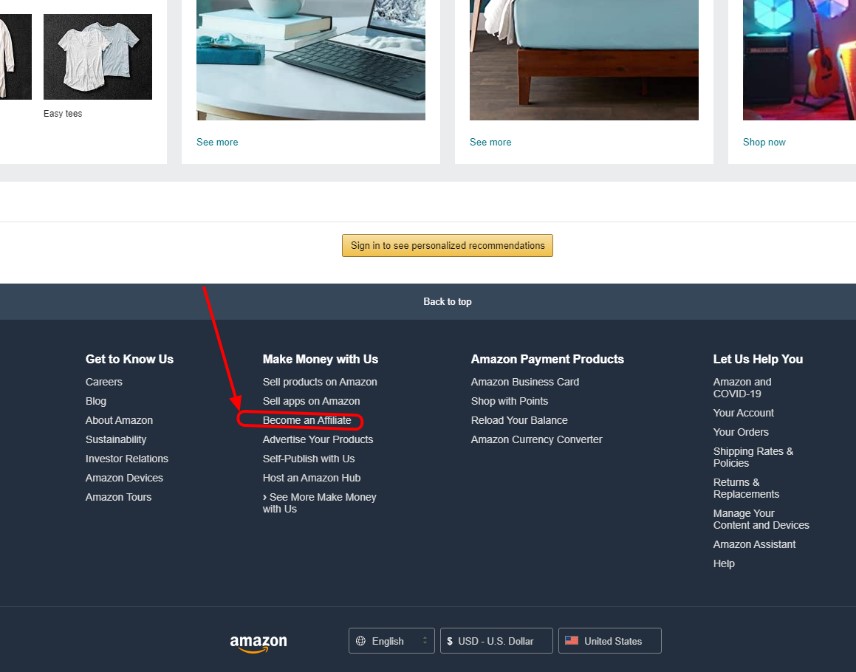
Benefits of working with LeadBit: dozens of offers of affiliate programs in one place, the list includes only reliable companies that pay honestly. There are statistics, round-the-clock tech support. Regular reviews and digests, with which you can learn how to make money from affiliate marketing from scratch.
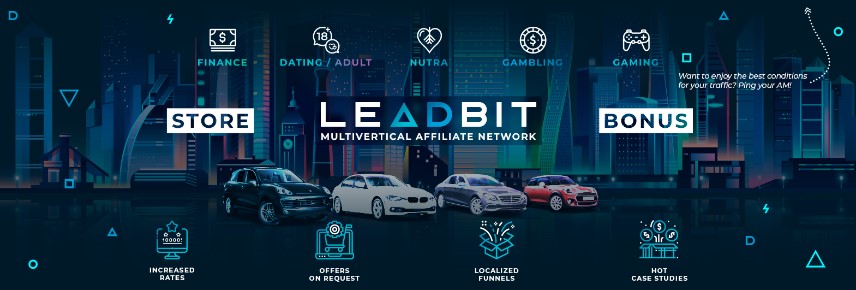
Paid subscription
Another traffic monetization method that’s helped some content creators to pull in unreal incomes – paid subscriptions to premium content. Naturally, you need to put in a lot of effort into your content and offer users some really cool stuff. But this method allows you to kill two birds with one stone.
You can make projections regarding your potential profits. Accordingly, you get resources to attract other experts, develop the website further. And you get a loyal audience that will follow your project. This is stable traffic that can be monetized in other ways (for example, selling brand products).

You can charge money for access to different features:
- exclusive reviews, “hot” news, for example, the latest reviews of the financial market, expert articles. The method is often used by news portals, which open access to the most relevant content only through a paid subscription;
- audio versions of articles, additional content: videos, graphics, spreadsheets, presentations. Also, you can charge for downloads of materials;
- closed forums with curators to discuss professional topics. For example, a platform for communication between architects, marketers, designers. You can also create a private group on social networks;
- educational courses, webinars, podcasts. The entire website or a closed section for subscribers can be devoted to educational materials;
- email newsletters with exclusive content: analytics, forecasts, educational materials, original reviews;
- online classes in small groups for subscribers, webinars where visitors can chat with the author.
Another idea is a paid message board. For example, a separate page where subscribers can post job ads or talk about their services.

An alternative is monetization through donations. Pros – you don’t necessarily need to publish exclusive content. Not everyone will donate (the same goes for paid subscriptions), but with a large enough audience, you can get a decent income. Bonus – some users, in gratitude for fascinating stories, are willing to give more than the cost of premium access.
Selling ad space directly to advertisers
Placing ads on a website is a popular way to monetize traffic. But many exchanges offer too low a rate and pay the webmaster only a small fraction of the profits. Sell ad space directly to maximize your profit potential. The advantage of this method is that you can set any price you want.

Naturally, if you offer too high a price, no one will pay. But then how much should you charge an advertiser? The ideal plan is if all ad slots are occupied and there is a list of regular advertisers. If there are too many people who want to advertise, the price is too low.
If you average 1,200 visitors every day, you can ask for $120 per ad. If 100,000 – up to $10,000.
You can check the bid for contextual advertising in Google Ads in a specific niche and region. For example, if the cost per 1,000 impressions is $4, you could ask for $400 for 30 days. Use Clicky Web Analytics, Quantcast and Google Analytics to evaluate traffic.
Where to find potential advertisers
- create a page with information on how one can become your partner. If the site is popular, you will quickly find someone eager to place an ad;
- post the same info in social media communities
- use a Linkedin account;
- register on special platforms: Seller Crowd, BuySellAds.

You can search for potential sponsors yourself. For example, contact online store owners, local manufacturers, or an online service and offer your services.
Featuring sponsored content
One way or another, you’re bound to mention third-party companies and their products in your articles. For example, if a website is dedicated to smartphones and accessories, dozens of brands pop up in reviews. Native ads perform well and generate higher conversions. Why not turn this content into a way to make money?
For a fee, you can post:
- small posts with an advertising link;
- product or online service reviews;
- mentioning sponsored products in email newsletters;
- advertising posts in a private social media group.
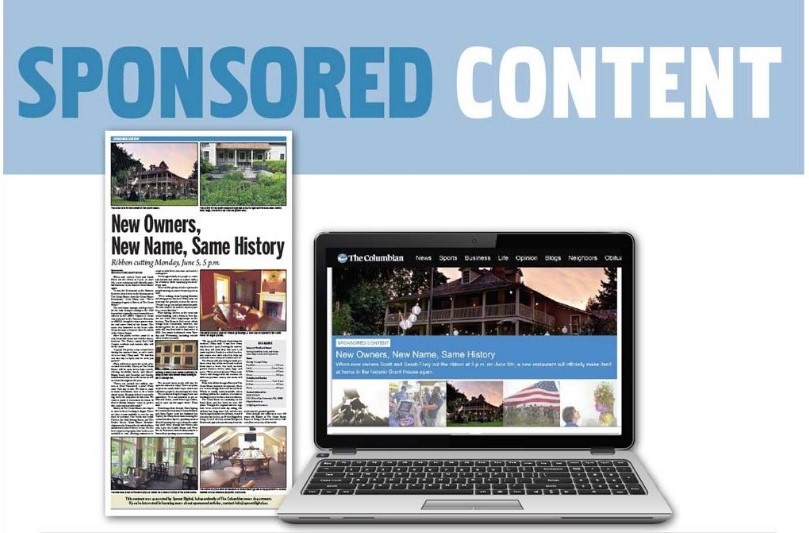
Now a few tips. First, пit is better to start publishing sponsored content when you have already amassed a decent-sized audience that trusts your opinion. Важна репутация. Reputation is important. If you look for sponsors from day one, expect low traffic and small payments.
Second, it’s better to cooperate with small local companies at first. Some people have a negative reaction to big brands receiving praise, while promotion of local firms, on the contrary, makes the user trust your website more. Although… it all depends on the website’s theme. If the theme is luxury cars, then even here you can find small sponsors, for example, a car-tuning salon or a factory that sews leather covers for car seats.
Third, try to avoid outright lies. Explicit praise, especially if the product is not of very good quality in reality, will negatively affect your reputation and provoke a drop in traffic. How to avoid this? Choose sponsors carefully, review services that actually have something worth of praise. If mostly shady companies contact you, then you should abandon this method of monetization for a while and start improving the quality of your content and attracting new readers. Successful projects attract big businessmen.
To avoid getting “demoted” by search engines, tag this type of content as “sponsored”. Add rel = “sponsored” or rel = “nofollow” tag to the sponsored links. More info about this in a guide from Google.
Publishing sponsored reviews is not a permanent way of earning money, but it does provide an opportunity to raise some extra funds. Non-professional bloggers charge $500-1,500 for a single sponsored post. For large portals, the price can go up to $100,000 for the publication of an article. The cost depends on the vertical and how much clout you have over your audience.
e-Commerce
Does your website have a regular following? If you’ve become a true influencer, users will happily use the products or services you recommend in your reviews.
You don’t necessarily have to turn your small blog into an online store. But nothing’s stopping you from creating a section with a catalog of goods or digital products: books, online courses, guides, etc.
Advantages of website monetization using e-Commerce:
- you don’t need to spend a lot of time of promoting the store, even if you don’t publish content at regular intervals, your revenue flow won’t sag;
- you don’t necessarily need to handle shipping yourself – storage and logistics can be outsourced to a third-party operator (dropshipping), which allows you to move almost any type of goods.
A promising niche is digital products. For example, if you are an expert in some field (you don’t necessarily have to have studied economics or quantum physics, you can just share knowledge on creating a website), you can package your experience into a book or an online course. The site can also be used to sell mobile applications, digital materials: photos, illustrations, flowcharts, templates, Photoshop presets, After Effect, video stock frames, jingles and loops.
Launch your own merch
If your website has a followage of tens of thousands of unique visitors, it’s time to think about starting your own brand. It may be a small comic book, a book with memoirs or a variety of goods: cups, t-shirts, caps, soft toys with the website’s logo. The method is good for creative authors in charge of lifestyle blogs. Or websites for parents that are looking for ways to explain something to their children in a simple manner.
Selling brand products is a lucrative venture. Souvenirs with a popular blog logo are sold quickly. And at a high price at that. For example, the owner of the “Wait But Why” website sells plush toys for 35 bucks with expenses being only $4-5 or 10 dollars posters with printing cost only around $1.
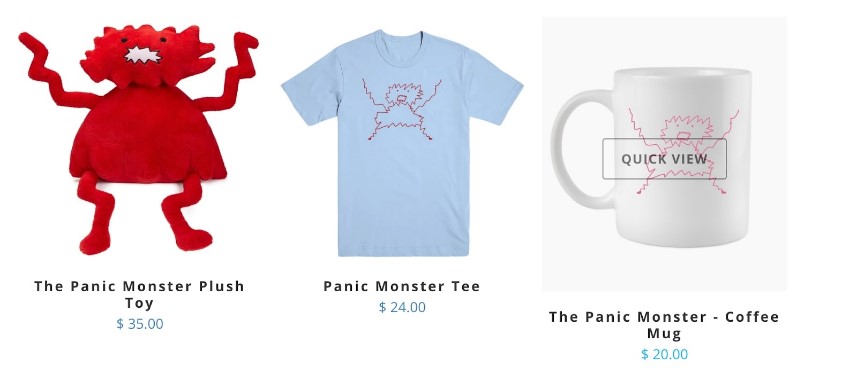
You don’t need to make and ship the merch you sell on your own. There are plenty of services that will do it for you. For example: teespring.com, www.spreadshirt.com (North America), printhub.moscow, www.ligapechati.ru (Russia). All you need to do is connect your website to the service or place an order manually.
Monetization through ad networks
In terms of income, selling ads through traffic exchanges is inferior to affiliate marketing and direct cooperation with advertisers. Even major entertainment portals with hundreds of thousands of unique visitors rarely earn more than $ 5,000. Small sites with 30-50 thousand visitors per month usually make 300-400 bucks, and sometimes as little as $100.

But ignoring this method altogether is just stupid:
- for novice webmasters, it is often the only way to monetize their website;
- attracting an advertiser is easy, all you need to do is register on an ad exchange, select the ad format and paste the code on your page;
- guaranteed income even if the site has not yet earned much of a reputation;
- traffic won’t go to waste if you’re still looking for direct cooperation with advertisers – even meager profits will motivate you to develop the website further and your efforts and hosting expenses will be paid off;
- ads can be launched even on websites dedicated to a narrow topic.
Where do you sell ads? Even users unfamiliar with Internet marketing and web development have heard of Google Ads. Register, or rather enter your account (most people already have it since it was created along with their email or Android smartphone Android), add your website, paste your code. All done.

But working with Google involves a lot of subtleties. There are many prohibited topics, requirements for the content, design, visitors (the general rules can be found here). You will have to compete with other webmasters for advertisers.
If you are not yet ready for strict requirements, you can work with other ad networks that accept webmasters, regardless of the niche, the number of visitors and the quality of the content. And there’s also more ad formats to choose from. You can set up a RSS feed, sell push-notifications, launch pop-ups, choose from banners, teasers, videos.
Take into account that the price will be lower. If Google or Bing have a CPC and CPM of $3-8 for competitive topics, other grids will set the price at $1-2 or even less than 50 cents. You can get acquainted with popular exchanges here.
What ads should you use?
Context
The most lucrative option are contextual ads. You insert a special code and a banner (several banners), video, ad post will be generated in its place. The key feature is that the ads are selected for each user individually based on their search history, sex, age and interests. This is a warmed-up client. They are more likely to click on the ad and make the purchase.

But only search engines possess this sort of data, they basically have a monopoly. Most have their own social network that helps collect even more information (for example, Google+ or My World Mail.ru). Popular contextual ad grids:
- Bing Ads;
- Yahoo Gemini;
- Yandex YAN;
- Baidu (mostly ads for China).
An undisputed leader occupying more than 90% of the market – Google Ads, which in addition to search engines collects data from mobile phones. It knows literally everything about its users, from the toothpaste they use to where they work or their favorite cafe.
Contextual ads are great no matter how you look at them: high CPC and CPM, great clickability and conversion rate. It brings good income. Even small private sites with a daily audience of just a couple of thousand users earn up to $500 every month. The income of large entertainment and information portals starts from two-three thousand dollars.
The drawback – tough moderation. Sites are selected based on the number of visitors (traffic) per day, topics, ranking, reputation. Shock and adult content as well as gambling is taboo. Even 1-2 pages with shady content or posting links that lead to fraud websites can lead to you getting dropped from the top search result page and your cooperation with the company terminated.
For young services, a serious obstacle is a minimum threshold of visitors. For example, if your site gets less than 500 unique visits a day, you won’t pass moderation in Yandex advertising network (YAN). Google has no such requirements (although it’s just extremely unlikely that), but has more stringent demands for other criteria, first of all, to the quality of the content (originality, usefulness, validity, entertainment value) and the topic.
Banner ads
For beginner webmasters, this is an alternative to contextual advertising. It works the same way: choose an ad format and place the link. Banners will generate in the place you select. Just like with contextual ads, there’s 2 payout models: PPC and PPM. There are several formats and sizes of banners.
Unlike their contextual counterparts, these ads will be targeted – usually (but not necessarily) corresponding to the website’s topic and will be displayed to users taking into account the settings made by the advertiser: sex, age, display time, region, etc.
The advantage of banner advertising is an almost infinite selection of stock exchanges to sell ad space to. You can find a network to perfectly fit your requirements including the topic, size of the banners, price and website requirements. You can control the niches you promote through ads. Finding an advertiser even for a young site that has only a couple of thousand visitors per month is pretty doable.

A drawback – they pay worse than banners. You need to carefully choose the exchange – some services scam webmasters and do not take into account the sold traffic (a user was using a VPN, Proxy, AdBlock, the conversion rate is lower, etc.).
Banner ads exchanges: MGid, PopUnder, Kadam, Advmaker, Adlane and others.
Native ads
The easiest example of native advertising – a couple of references to a brand or online store sprinkled around an informational article. For example, if you make a review of a new smartphone and paste a link to an online store. But you don’t need to “handpick” advertisers. There are ads that are automatically embedded and disguised as the website’s regular content:
- in the form of social media posts;
- as the website’s text blocks;
- as a block that is disguised to look like a link that leads to similar articles.
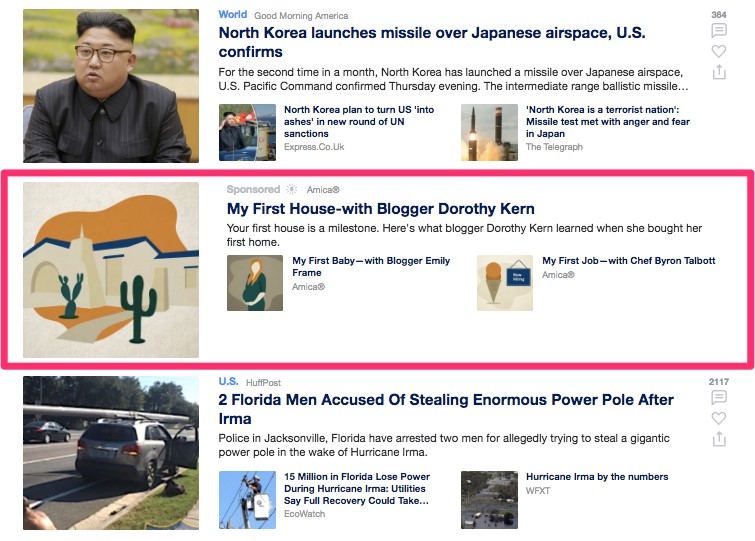
Native ads have many advantages. Often, users can’t even tell they’re looking at sponsored content. Users trust such promotion methods more and advertisers are willing to pay more. The website suffers zero reputational damage.
There are practically no drawbacks, even if there are some, they are connected to the peculiarities of the chosen ad network. Popular exchanges suitable for all GEOs: MGid, PropellerAds, ExoClick.
Teasers
Teasers can technically be called banner ads. But they have a unique way of presenting information: small blocks with shocking headlines and pictures.
Such ads are typically used to promote gray-hat services or shady products: porn websites, online casinos, all kinds of weight loss and erectile enhancement products. Their main advantage – easy-to-pass moderation. Teasers are a good choice if your blog is dedicated to a topic that white-hate ad networks don’t particularly like, for example, one dedicated to reviewing online casinos and roulette strategies. Such exchanges also accept websites with less than 100 visitors.

The drawback, besides the low pay – teasers damage the website’s reputation, especially if it’s a white-hat one. A single block won’t really affect your traffic flow. But outright spamming your visitors with teasers will alienate 80-90% of users.
PopUnder, ClickUnder
ClickUnder is an ad that blocks the contents of the page and triggers a redirection to the advertiser’s website following a click anywhere on the page. PopUnder is a pop-up ad that covers up part of the content.
Such ads don’t spoil the website’s design and sometimes even overpasses contextual ads in terms of profit thanks to a high click rate. Most networks don’t have any strict requirements for the platforms that house their ads. But it might damage your sight by alienating visitors. How to avoid this?
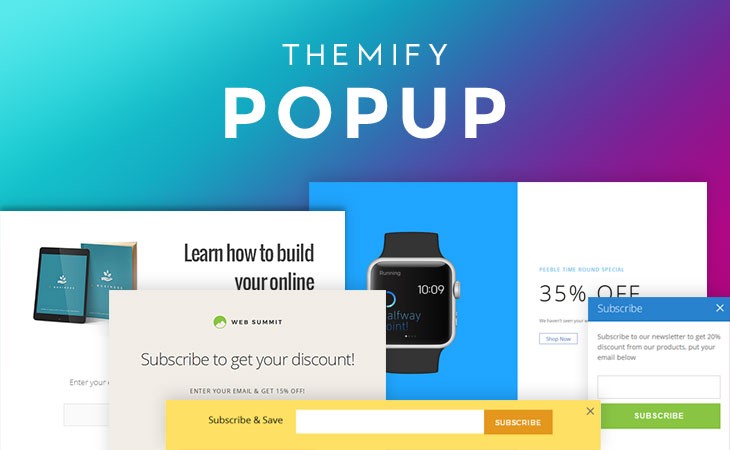
Stick to these simple rules:
- don’t overdo it with the number of ads;
- carefully pick the ad exchange;
- PopUp irritates the user less since it opens in a separate tab;
- you can display the ad not when the user opens the websites, but rather when they try to close it or come back to it from a different tab;
- no fixed time periods before giving the user a chance to close it – most of them will just leave without waiting.
Popular exchanges: PopAds, PopCash, Propeller, ClickAdu, Adsterra, RichPops. You can find more here.
Push-notifications
Another option are push-notifications. These are compact messages that are sent to the user directly from the server. They show up even when the website (or browser) is closed). They can appear on the desktop or on the smartphone’s notification panel.
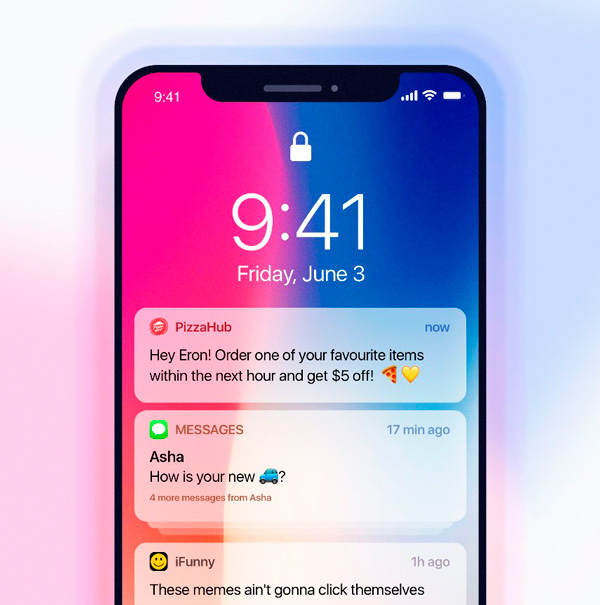
The advantage of push-notifications – it doesn’t alienate users (they themselves enabled this feature), allows you to make a profit from selling ad spaces without changing the website’s design. But the revenue from this method isn’t all that impressive, it’s best to use it as an additional source of income. Although there are many examples of people securing high incomes with the help of push-notifications.
Exchanges: PropellerAds, RichPush, MGID, Adsterra, Zeropark, Mobidea Push, MegaPush. You can find more.
Additional tools
Creating a website is easy. There are many website builders that let you launch a website within 15 minutes. But if you’re turning your hobby into a business, you’ll need additional tools
Analytical services
Need to evaluate traffic, “meet” your audience, locate errors? Analytical services are here to help. They allow you to analyze your website and those of your competitors. Popular services:
- Google Analytics;
- Metrika;
- pr-cy.ru;
- Serpstat;
- Similarweb.
SEO promotion
These are hundreds of tools for selecting keywords, evaluating your positions in search results, finding problems in SEO. Several services:
- serpstat.com;
- serpparser;
- Key Collector;
- SpyWords;
- RushAnalitics;
- Google Trends;
- Google keyword planner;
- Yandex Wordstat.
Payment systems
Here, everything looks simple enough – attach your bank card and receive payments. But not all services accept credit cards. So, you’ll need to create some e-wallets:
- Webmoney, Qiwi Wallet – for working with the Russian segment of the Internet;
- PayPal – supports most payment systems in English-speaking countries;
- Skrill – a convenient online wallet with a simple withdrawal procedure and low fees, supported by most ad exchanges.
Hostings
Several hostings with affordable prices and a good reputation:
- bluehost;
- Godaddy;
- Hostinger.
Popular builders: PaperForm, Wix, Tilda.cc, SitePro, WordPress, Google Sites,
Mailing services
One way to communicate with the audience is through email and messenger mailing lists. It allows you to inform, for example, premium (paid) users of new features and share exclusive content. Specialized services will help you do this:
- GetResponse;
- SendPulse;
- Unisender.
Summing up…
There’s a very large number of monetization methods to choose from, no one’s stopping you from combining several. For example, you can simultaneously start selling traffic through contextual, native and push-advertising, place sponsored content and sell merch. But your first priority is to develop the website. Quality content, a convenient layout, a reliable hosting and an attractive domain – all of this helps to obtain the trust of the audience and ad networks.
And remember every webmaster’s golden rule: the audience always comes first – monetization takes second place.

